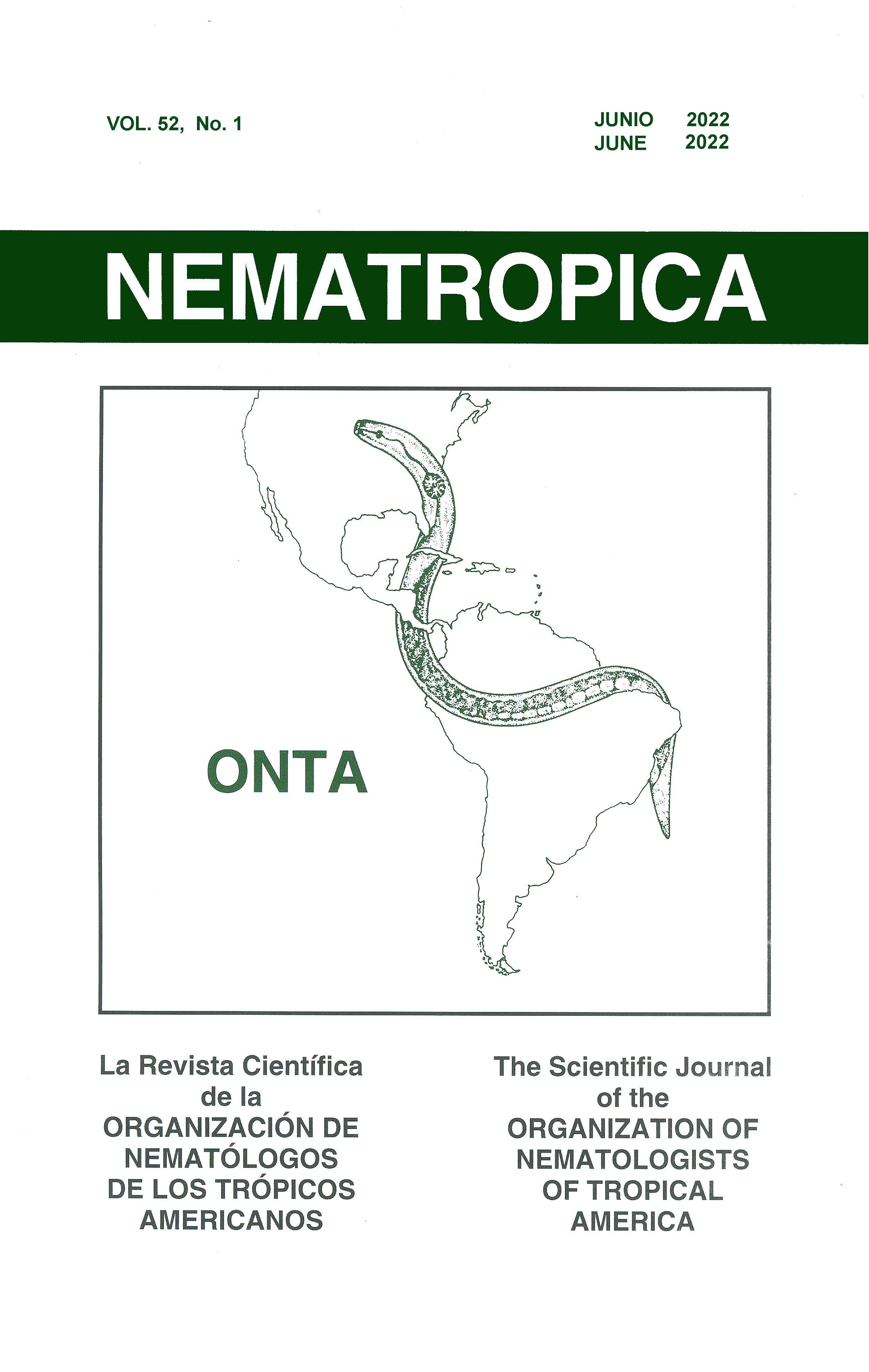PLANT-PARASITIC NEMATODES ASSOCIATED WITH WEEDS IN POTATO (SOLANUM TUBEROSUM L.) FIELDS FROM THE NORTHERN AREA OF CARTAGO, COSTA RICA
Abstract
Potatoes are the main vegetable produced in Costa Rica, however, basic information about the interaction of nematodes and alternative hosts in potato fields is lacking. The objective of this study was to identify the plant-parasitic nematodes associated with weeds in potato fields from the northern area of Cartago, Costa Rica. Weeds from 15 potato fields (3 months after planting) were sampled. To determine the most frequent weed species, 5 sections (approximately 4 m2) were sampled in each field using a 1 m2 square. The most frequent weed species (a maximum of five) were selected, and five composite root samples per weed were processed for subsequent nematode identification and quantification. Twenty-seven weed species were identified in the potato fields, with Brassica campestris, Lepidium virginicum, and Poa annua among the six most frequent weed species. Fifteen nematode genera, two families, and a subfamily were identified associated with weed roots. There were statistical differences between endoparasitic nematodes. Pratylenchus had the highest frequency of occurrence relative to heteroderids and Meloidogyne. Pratylenchus also had the highest average population density of the endoparasitic nematodes with 31,056 nematodes/100 g of roots. Our results provide valuable information for the integrated management of nematodes. Alternative hosts such as weeds should be managed after the potato production cycle. Fallow could increase population densities of plant-parasitic nematodes, detrimental to other common crops in the region, such as onions and carrots.

